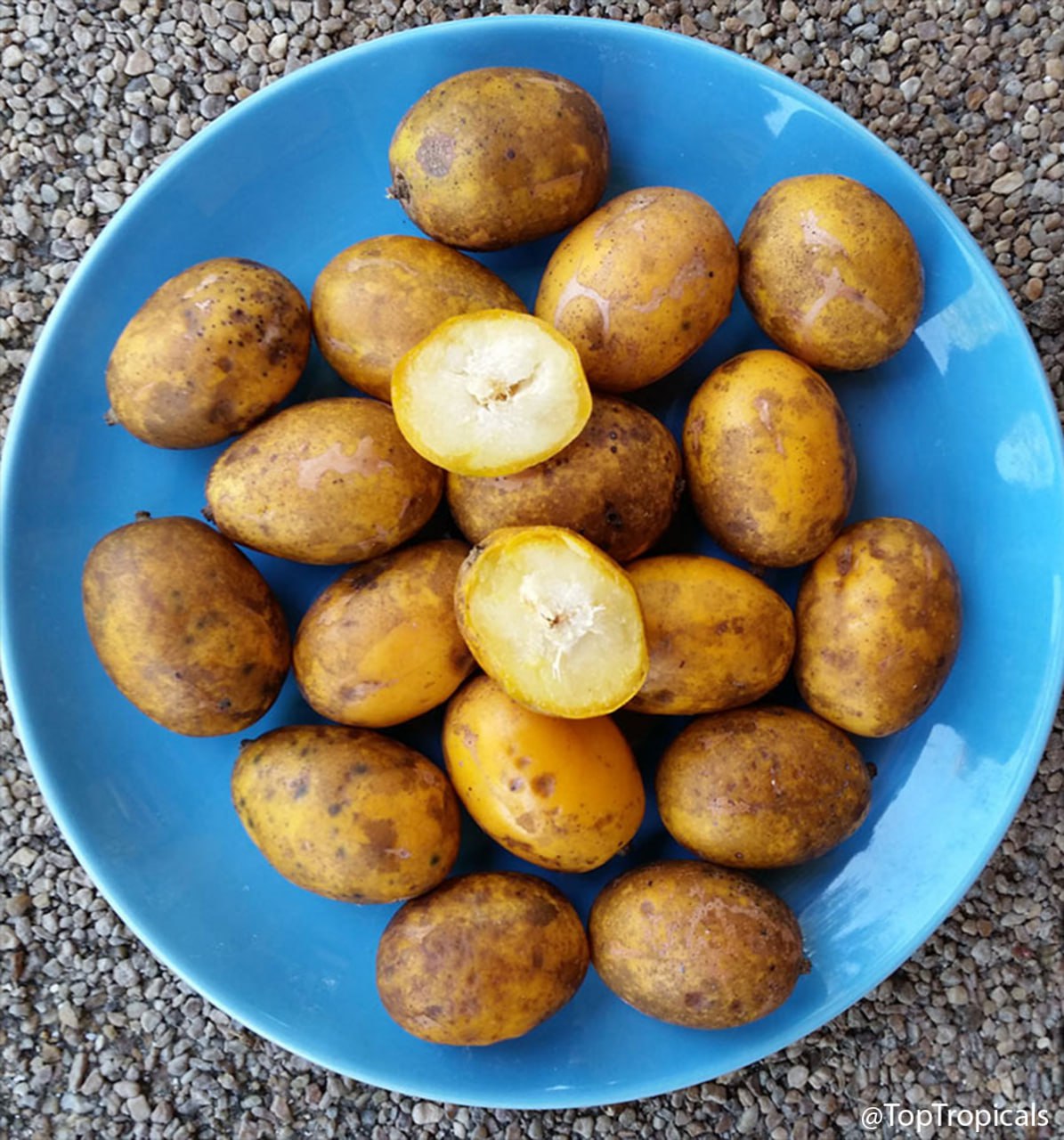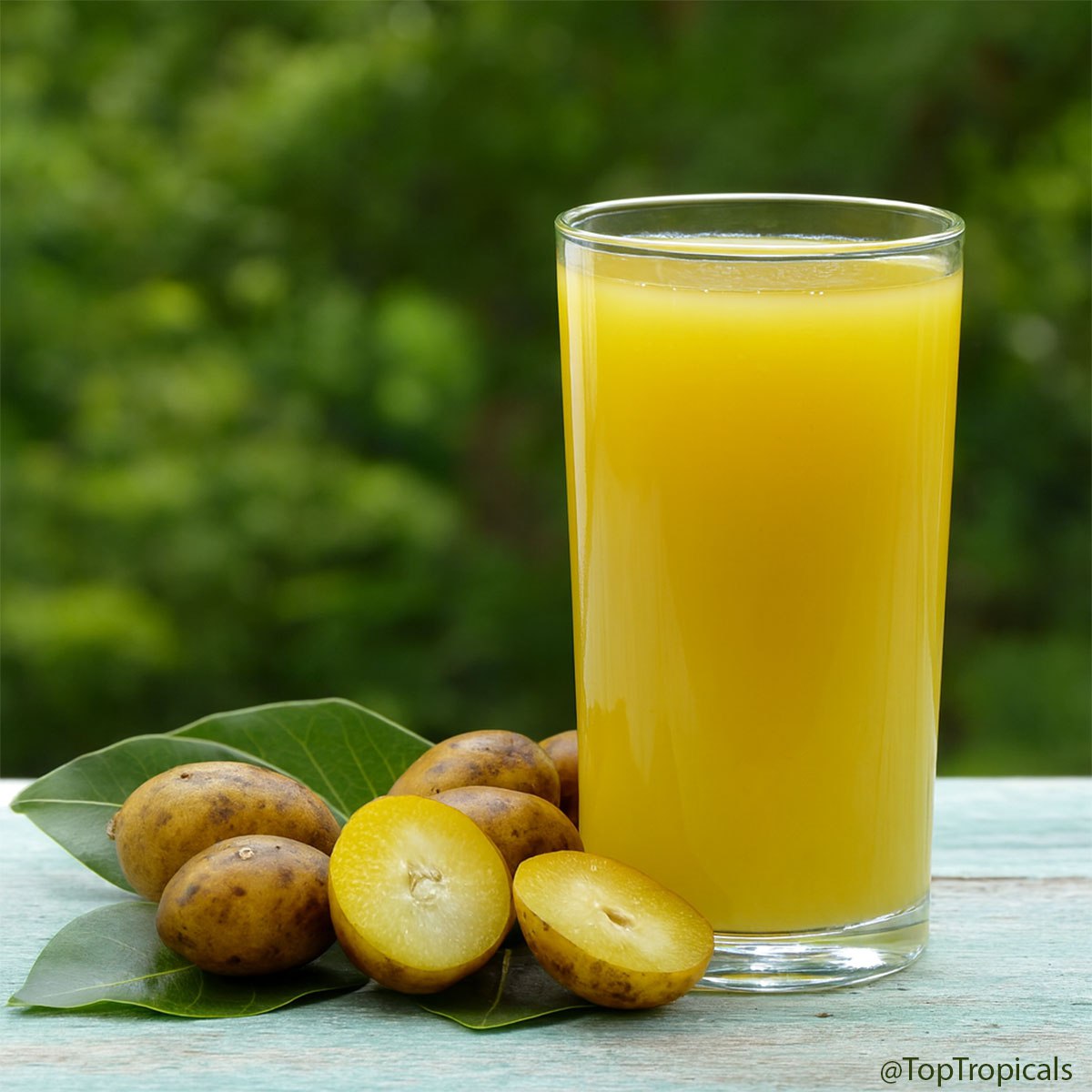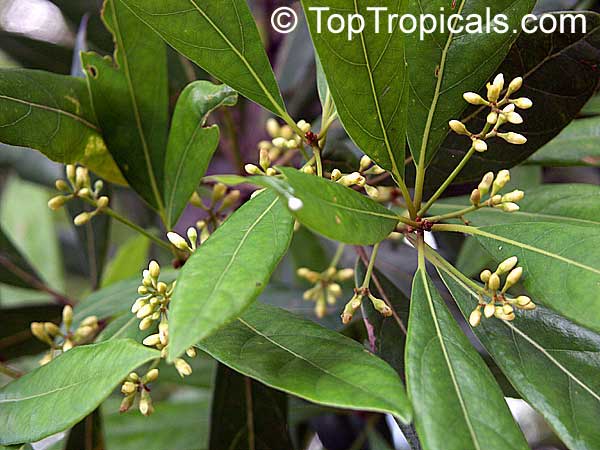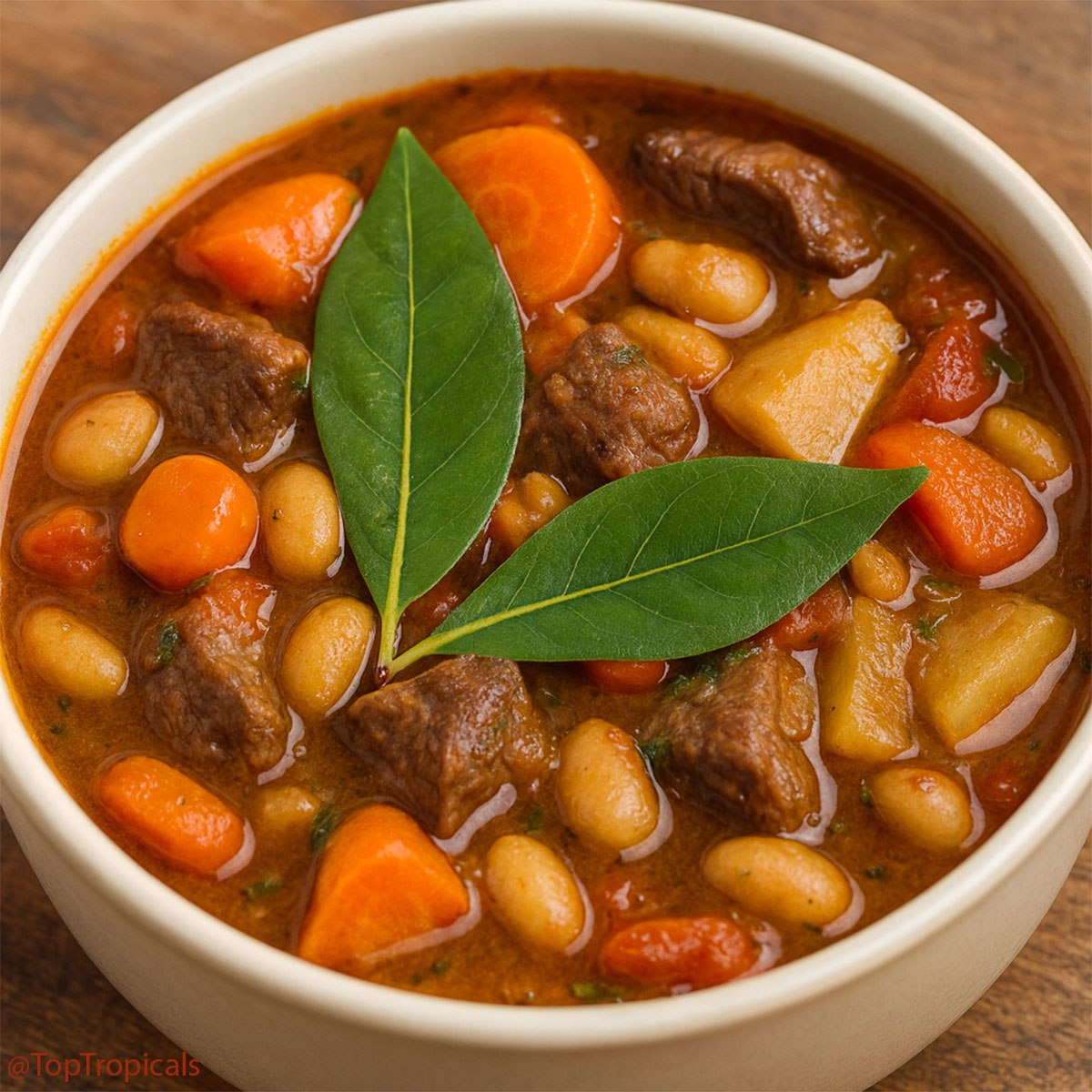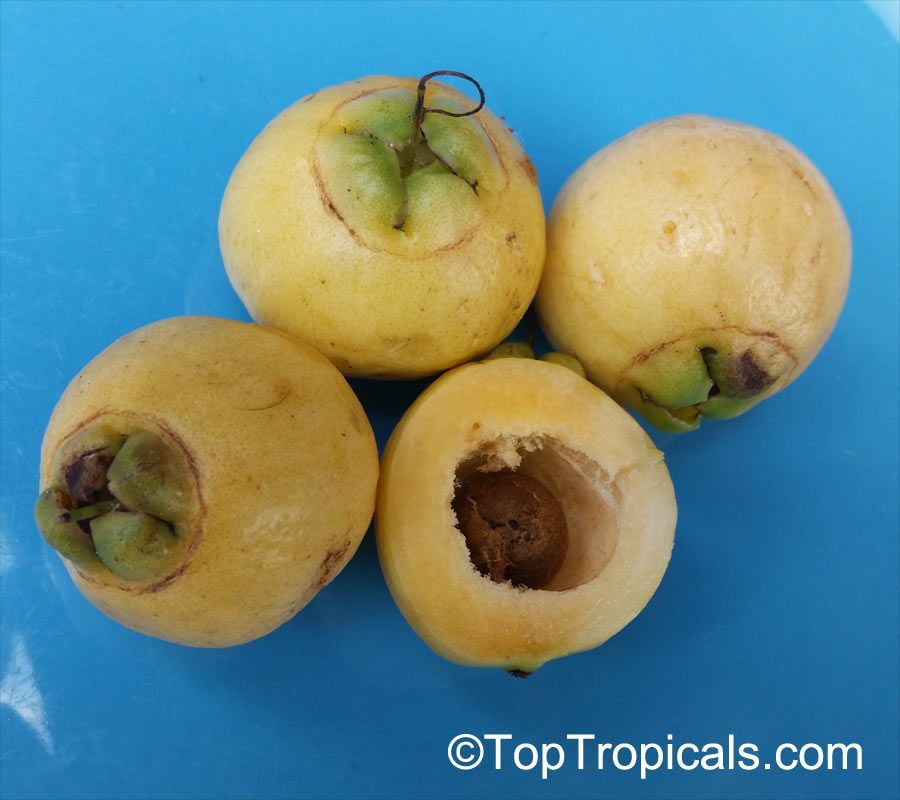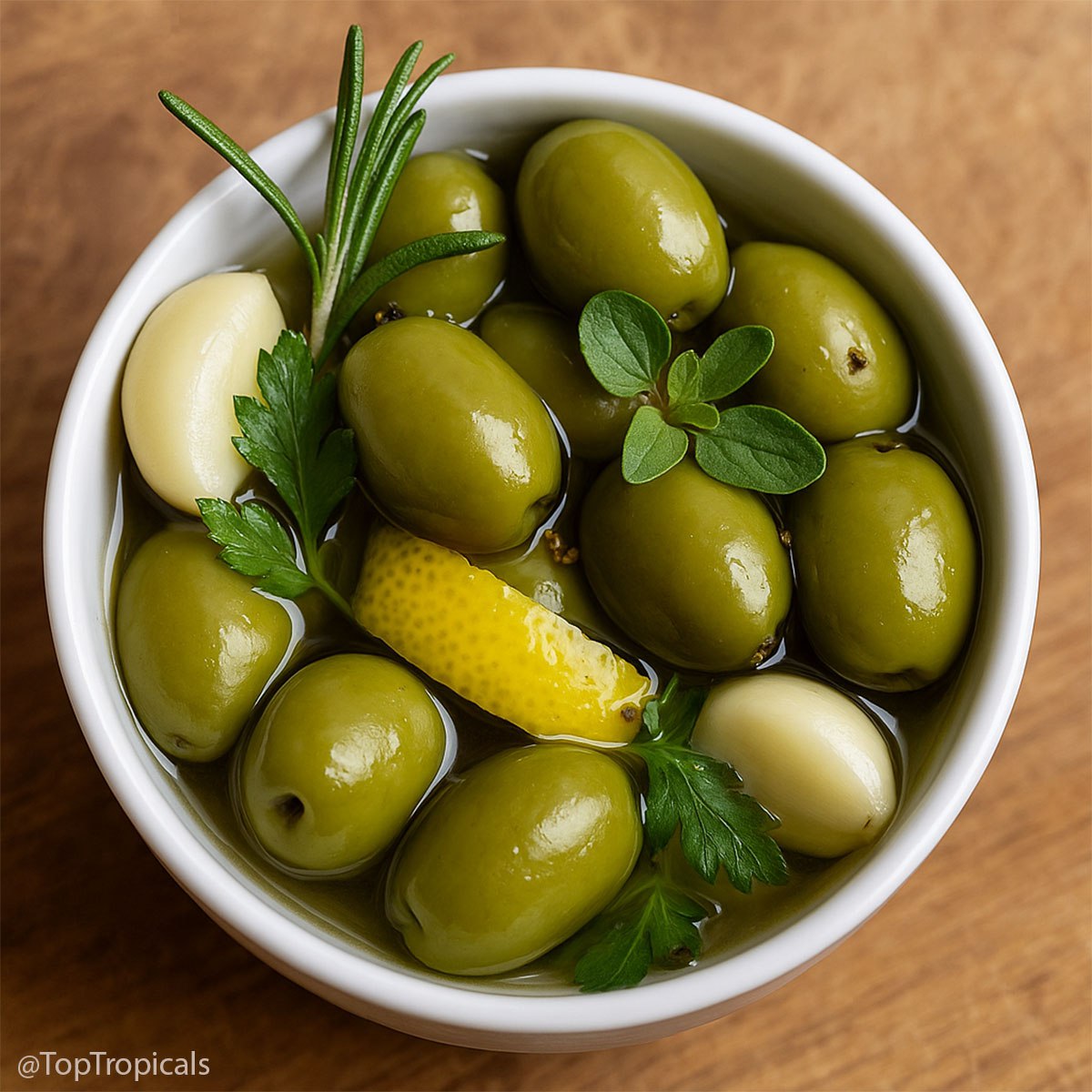Garden Blog - Top Tropicals
How to get lots of Star Fruit
Star Fruit- Carambola Tree, Averrhoa carambola
⭐️ How to gets lots of Star Fruit Carambola
🌟 Growing tips
🟡 Sun: Loves full sun. The more light, the sweeter the fruit.
📚 Learn more:
🛒 Explore Star Fruit varieties
#Food_Forest
🟢 Join 👉 TopTropicals
🟡 Sun: Loves full sun. The more light, the sweeter the fruit.
- 🟡Temperature: Keep warm and protect from winds. It thrives in warm, tropical climates but can handle light frost if sheltered from cold winds - wind-free is the key.
- 🟡Soil: Prefers well-drained soil. Avoid waterlogging.
- 🟡Water: Regular watering keeps it happy, but don’t let roots sit in soggy soil.
- 🟡Size: Space saver! This compact tree doesn’t take up much room, perfect for smaller gardens. Dwarf varieties also do well in containers.
- 🟡Growth and crop: Fast-growing and early to fruit. Seedlings start producing in about three years, while grafted or air-layered trees fruit right away.
- 🟡Flowers: Beautiful pink blooms appear before the fruit, adding extra charm to the garden.
- 🌟 With just a bit of care and protection from wind and cold, your Carambola tree will reward you with baskets of bright, starry fruit through the cooler months when most other trees rest.
- 🌟 Slice one open and you get perfect star-shaped pieces that brighten up salads, desserts, or smoothies. The fruit is crisp, juicy, and beautifully sweet-tart. It’s nature’s candy - refreshing, low in calories, and rich in vitamin C and antioxidants.
📚 Learn more:
- ✦ Star Fruit from our garden
- ✦ Grow your own Carambola
- ✦ Top 10 fast-fruiting trees: #8. Carambola - Starfruit
- ✦ Carambola Banana Whip
- ✦ Carambola Jam recipe
- ✦ When young Carambola trees are covered with fruit
- ✦ Carambola tree is the Star of the orchard
🛒 Explore Star Fruit varieties
#Food_Forest
🟢 Join 👉 TopTropicals
June plum juice: quick-n-fun exotic recipes
🍴 June plum juice: quick-n-fun exotic recipes
🛒 June Plum will fruit year around in your garden
📚 Learn more:
#Food_Forest #Recipes
🟢 Join 👉 TopTropicals
- 🟡Blend June plums with ginger, sugar, and water.
- 🟡Tangy, spicy, and super refreshing.
June Plum Juice
Ingredients
- June plums
- Ginger
- Sugar
- Water
Instructions
- Blend June plums with ginger, sugar, and water.
- Serve chilled.
🛒 June Plum will fruit year around in your garden
📚 Learn more:
- ▫️What fruit tree is full of fruit year around
- ▫️How June plum can "fruit itself to death": look at this heavy load!
#Food_Forest #Recipes
🟢 Join 👉 TopTropicals
Fruits with the most vitamin E, according to dietitians
Fruits with the most vitamin E, according to dietitians
🛒 Plant more remedies in your food forest
📚 Learn more:
#Food_Forest #Remedies #Discover
🟢 Join 👉 TopTropicals
- 🔛 Vitamin E works as an antioxidant that helps fight inflammation throughout the body. While nuts and seeds top the charts, some fruits quietly add their share to your daily needs - especially when eaten with a bit of healthy fat. According to New York City Nutrition, vitamin E anti-inflammatory action supports heart, brain, and skin health.
- 🔛 Vitamin E is a fat-soluble vitamin that acts as an antioxidant, meaning it fights inflammation in the body. Because of this anti-inflammatory role, vitamin E is beneficial for immune health, heart health, eye health, brain health, and skin health.
- 🔛 Adults need about 15 milligrams a day, according to the National Institutes of Health. Deficiency is rare, but it’s smart to get vitamin E from a variety of foods. Fruits alone don’t provide large amounts, but they can complement vitamin-E-rich foods like almonds or sunflower seeds.
- 🔛 Since vitamin E needs fat for absorption, pair fruit with something creamy or crunchy - like yogurt, olive oil, nuts, or seeds - for best results.
- 🔛 Here are some fruits that naturally offer vitamin E:
- 🍊 Sapote 1 cup = 3.7 mg vitamin E. A tropical favorite with rich orange flesh and a flavor somewhere between pumpkin pie and sweet potato, with hints of honey and almond, Sapote is great fresh, blended in shakes, or scooped over ice cream. It also packs calcium, iron, potassium, and vitamins A and C.
- Blackberries 1 cup = 1.7 mg vitamin E. Deep color, bold flavor, and plenty of antioxidants, Blackberries are high in fiber and low in calories. Dietitian Keri Glassman calls them her top fruit for fighting inflammation.
- Mango 1 cup = 1.5 mg vitamin E. The “king of fruits” brings more than tropical sweetness, Mango supports digestion, helps you feel full longer, and delivers both vitamin A and E in one juicy package.
- 🍉 Guava 1 cup = 1.2 mg vitamin E. This fragrant fruit has a flavor that lands between strawberry and pear, Guava is also one of the highest-fiber fruits and surprisingly rich in protein for a fruit.
- 🍑 Persimmon 1 fruit = 1.2 mg vitamin E. An autumn favorite that looks like an orange tomato but tastes sweet and mellow, Persimmons are rich in vitamins A and C and make a colorful, fiber-filled snack or dessert.
- Avocado 1 fruit = 0.9 mg vitamin E. Creamy, mild, and versatile, Avocado’s healthy fats help your body absorb vitamin E while protecting heart health. Try it on toast, in salads, or as a smooth butter substitute in baking.
🛒 Plant more remedies in your food forest
📚 Learn more:
- ▫️Plant a fruit tree - and breathe easier: fruit might be the surprising key to healthier lungs
- ▫️11 tropical fruits to eat instead of taking a fiber supplement
- ▫️Tropical fruit health benefits guide - what fruit and edibles can help with health issues and vitamin deficiencies, Part 1 and Part 2.
- ▫️Five best fruit trees to plant in Summer
- ▫️10 best fruit trees to grow in Florida and Southern landscapes
- ▫️Top 10 fruiting plants you'll ever need for your health benefits
#Food_Forest #Remedies #Discover
🟢 Join 👉 TopTropicals
Allspice leaf stew: quick-n-fun exotic recipes
🍴 Allspice leaf stew: quick-n-fun exotic recipes
🛒 Your own Allspice Tree keeps ultimate spice handy
📚 Learn more:
#Food_Forest #Recipes
🟢 Join 👉 TopTropicals
- 🟢Simmer fresh allspice leaves with meat, beans, and vegetables.
- 🟢Adds a deep clove-cinnamon flavor without any powder.
- Fresh allspice leaves
- Meat
- Beans
- Mixed vegetables
- Simmer fresh allspice leaves with meat, beans, and vegetables.
- Cook until tender and aromatic.
Allspice Leaf Stew
Ingredients
Instructions
🛒 Your own Allspice Tree keeps ultimate spice handy
📚 Learn more:
- ▫️What spice comes from the small dried flower buds of a tropical tree?
- ▫️What tree will produce for you right away?
#Food_Forest #Recipes
🟢 Join 👉 TopTropicals
Edible cactus with health benefits that your tortoise will love too

Opuntia cochenillifera - Velvet Nopal Cactus, Nopales, Prickly Pear, leaves and flower

Opuntia cochenillifera - Velvet Nopal Cactus, Nopales, Prickly Pear, leaves
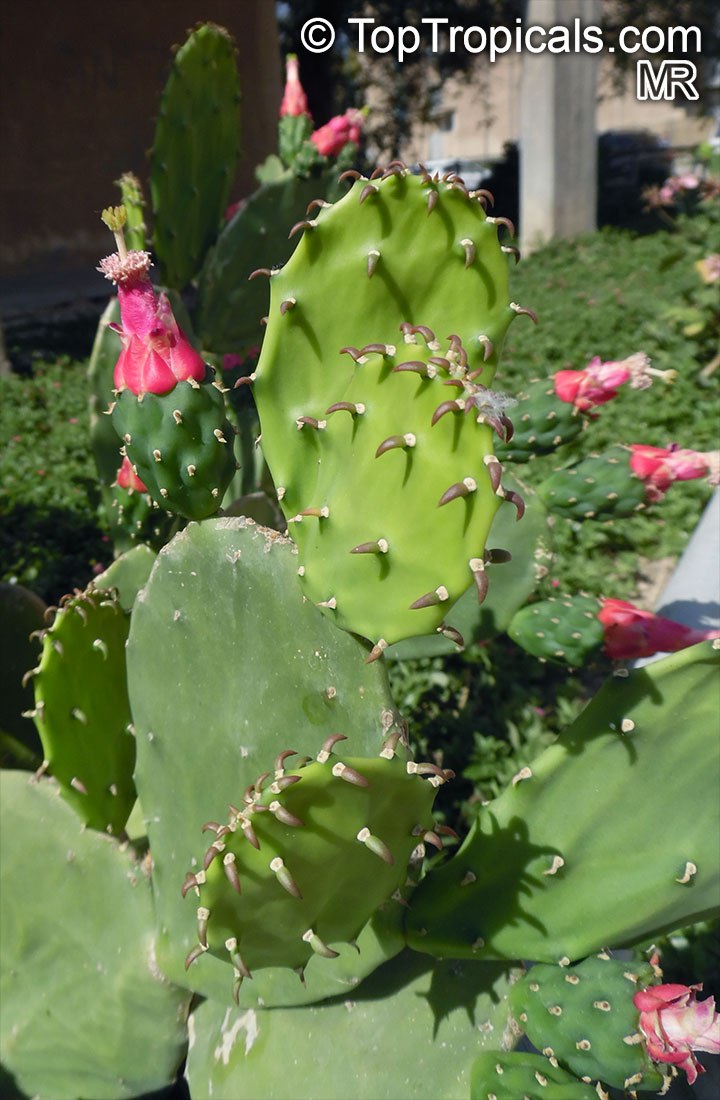
Opuntia cochenillifera - Velvet Nopal Cactus, Nopales, Prickly Pear, leaves and flowers
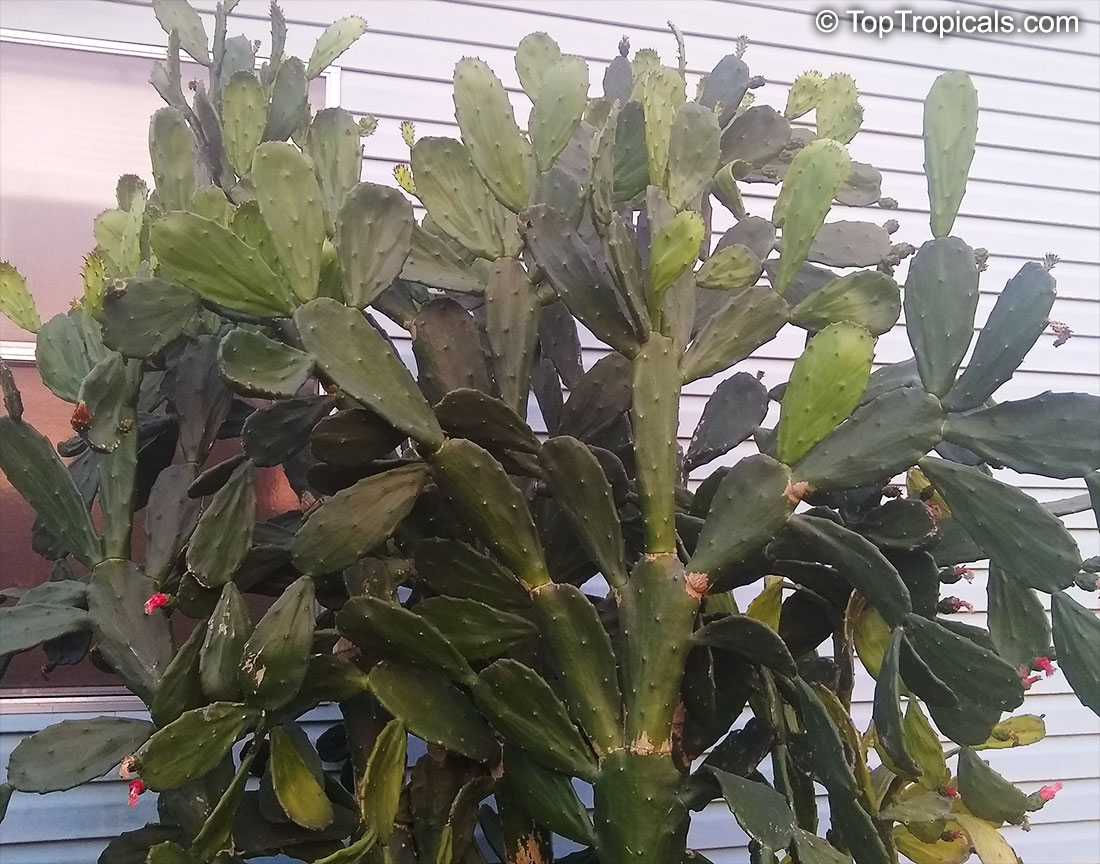
Opuntia cochenillifera - Velvet Nopal Cactus, Nopales, Prickly Pear, large plants
🐢 Edible cactus with health benefits that your tortoise will love too
🛒 Plant your own food and pharmacy Nopales
#Food_Forest #Remedies
🟢 Join 👉 TopTropicals
- 🌵 Opuntia cochenillifera - Velvet Nopal Cactus, Nopales, Prickly Pear - is one of the most useful and forgiving cactus species you can grow. Unlike most desert cacti, this one thrives even in humid tropical climates like Florida, making it one of the few rain-tolerant cacti that actually loves moisture. Fast-growing and ornamental, it produces bright red flowers and makes a beautiful, low-maintenance landscape plant that thrives in heat, drought, and even neglect.
- 🌵 Prickly Pear is a very valuable edible, used as a vegetable with impressive medicinal properties. The young pads, called nopales, can be stir-fried or sauteed with onions and garlic for a tangy, nutrient-rich side dish.
- 🌵 In Hispanic cooking, this plant is known simply as Nopal or Nopales – a traditional ingredient used in dishes like ensalada de nopales (nopal salad), nopales con huevo (eggs with cactus), and nopales asados (grilled cactus).
- 🌵 Regularly eating Nopales has been linked to improved blood sugar control, and many people who include it in their diet report significant help in managing diabetes.
- 🌵 Nopales is also a favorite treat for tortoises and other herbivorous pets. Its smooth, spineless pads are packed with hydration and nutrients, making it a safe, natural food source.
- 🌵 So, this is not just a cactus - it’s a food, medicine, and ornament all in one. Tough, beautiful, and endlessly useful!
🛒 Plant your own food and pharmacy Nopales
#Food_Forest #Remedies
🟢 Join 👉 TopTropicals
Rose apple salad: quick-n-fun exotic recipes
🍴 Rose apple salad: quick-n-fun exotic recipes
🛒 Plant exotic Rose Apple Tree
📚 Learn more:
Fruit that smells like roses
#Food_Forest #Recipes
🟢 Join 👉 TopTropicals
- 🔴Slice rose apples, toss with cucumber, lime, and mint.
- 🔴Light, crunchy, and fragrant.
Rose Apple Salad
Ingredients
- Rose apples
- Cucumber
- Lime
- Mint
Instructions
- Slice rose apples and cucumber.
- Toss with lime and fresh mint.
- Serve fresh and chilled.
🛒 Plant exotic Rose Apple Tree
📚 Learn more:
Fruit that smells like roses
#Food_Forest #Recipes
🟢 Join 👉 TopTropicals
Marinated green olives: quick-n-fun exotic recipes
🍴 Marinated green olives: quick-n-fun exotic recipes
🛒 Grow your own Olive tree
📚 Learn more:
▫️How to grow your own Olive Oil
#Food_Forest #Recipes
🟢 Join 👉 TopTropicals
- 🟢Soak fresh Olives in brine with garlic, lemon peel, and herbs.
- 🟢A zesty snack after curing.
- Fresh olives
- Garlic
- Lemon peel
- Herbs
- Brine
- Soak fresh olives in brine with garlic, lemon peel, and herbs.
- Allow to cure until the flavor develops.
- Serve as a zesty snack.
Marinated Green Olives
Ingredients
Instructions
🛒 Grow your own Olive tree
📚 Learn more:
▫️How to grow your own Olive Oil
#Food_Forest #Recipes
🟢 Join 👉 TopTropicals
How to protect Avocado from cold and how hardy is it?
❄️ How to protect Avocado from cold and how hardy is it?
Growing Avocado trees in cooler regions is possible with the right variety and care. By choosing Cold Hardy types and protecting them during cold spells, you can successfully grow avocados outside tropical climates. The more mature your tree, the better it handles the cold.
❄️ Protection for young plants
With a little planning and protection, you can enjoy fresh avocados even in cooler climates!
✔️ Check outAvocado Variety Guide interactive chart. Sort them by flower type A or B, tree habit, fruit shape and quality, cold hardiness, origin, season and more!
🛒 Shop Cold Hardy Avocados
📖 Our Book: Avocado Variety Guide, Snack or Guacamole?
📚Learn more:
#Food_Forest #Avocado #How_to
🟢 Join 👉 TopTropicals
Growing Avocado trees in cooler regions is possible with the right variety and care. By choosing Cold Hardy types and protecting them during cold spells, you can successfully grow avocados outside tropical climates. The more mature your tree, the better it handles the cold.
- ❄️ What is Avocado cold hardiness?
Most Avocados are sensitive to frost, but some Mexican varieties can survive lows around 15°F once established, and brief dips near 10°F with good care.
- 👉 Cold tolerance depends on:
- ✦ Duration of cold: Short freezes are easier to survive.
- ✦ Sun exposure: More sun means better cold resistance.
- ✦ Wind protection: Wind can do more harm than temperature alone.
- ✦ Tree health: Regular fertilization, such as Sunshine Boosters, helps strengthen plants.
- ❄️ How to protect avocados from cold
- ✦ Bigger is better: Mature trees resist cold better than young ones.
- ✦ Wind protection: Plant on the south or southeast side of a building for warmth.
- ✦ Good fertilization: Healthy trees are stronger and more resilient.
- ✦ Watering: Water less in winter; overwatering in cold weather can cause root rot.
❄️ Protection for young plants
- ✦ Cover and mulch: Before a freeze, mound mulch around the base and cover with a blanket. Add Christmas lights or a small heater for extra warmth (use caution).
- ✦ Use microclimates: Plant near walls or buildings where it’s warmer and wind is reduced.
With a little planning and protection, you can enjoy fresh avocados even in cooler climates!
✔️ Check outAvocado Variety Guide interactive chart. Sort them by flower type A or B, tree habit, fruit shape and quality, cold hardiness, origin, season and more!
🛒 Shop Cold Hardy Avocados
📖 Our Book: Avocado Variety Guide, Snack or Guacamole?
- ·
📚Learn more:
- · Can I Grow Avocado Outside the Tropics?
- · Avocado Variety Guide
- · How to grow cold-hardy avocados and how cold-hardy are they?
- · Avocado that laughs at frost: Mexicola Grande for cooler climates
- · Cold hardy Avocado Joey: you can eat with the skin
- · Posts about #Avocado
#Food_Forest #Avocado #How_to
🟢 Join 👉 TopTropicals
The secret Brain Food growing in my backyard (and it tastes like green peas!)
Tropical Asparagus (Sauropus androgynus)
🏆 The secret Brain Food growing in my backyard (and it tastes like green peas!)
🛒 Add Katuk Superfood to your Food Forest
Lean more:
🍴 Katuk egg stir-fry: Quick-n-Fun exotic recipes
✔️ Discover the health benefits of Katuk: a Superfood for your mind and body
📚 Tropical Asparagus, Katuk: Grow your own food
📱 How to cook with Katuk
#Food_Forest #Remedies #Discover
🟢 Join 👉 TopTropicals
- 🌿 Katuk, or Tropical Asparagus (Sauropus androgynus), is one of the most underrated edible plants you can grow. This leafy tropical shrub is a superfood in disguise. It grows fast, looks lush, and its tender young shoots taste just like green peas.
- 🌿 Native to Southeast Asia, Katuk is a kitchen staple in places like Vietnam, Malaysia, and Thailand. The leaves and shoots are used in soups, stews, and stir-fries with egg or seafood. It’s not only delicious but also incredibly nutritious - rich in nutrients linked to improved memory and reduced cognitive aging: folate, lutein, and especially vitamin K, which is rare in plants.
- 🌿 Katuk thrives in sun or partial shade, needs little care, and grows into a dense, bushy plant that gives you edible greens all year round. If you want something that feeds both your garden and your health, this one’s a winner!
🛒 Add Katuk Superfood to your Food Forest
Lean more:
🍴 Katuk egg stir-fry: Quick-n-Fun exotic recipes
✔️ Discover the health benefits of Katuk: a Superfood for your mind and body
📚 Tropical Asparagus, Katuk: Grow your own food
📱 How to cook with Katuk
#Food_Forest #Remedies #Discover
🟢 Join 👉 TopTropicals
Cashews: more magnesium than almonds!
Cashews: more magnesium than almonds!
🏆 More magnesium-rich fruit:
Avocado
Avocados are famous for their healthy fats, but they’re also surprisingly high in magnesium - about 58 mg per medium fruit. That’s one of the highest amounts among fruits. Their creamy texture and fiber content make them especially gentle on the stomach, helping digestion and easing constipation. Regularly adding avocado to meals can support gut health, muscle function, and overall mineral balance in a naturally delicious way.
🍍 Pineapple
Best known for its enzyme bromelain, pineapple also provides a helpful 20 mg of magnesium per cup. While not the top source, it offers a rare combination of fiber, enzymes, and minerals that benefit the digestive system. Bromelain helps reduce inflammation in the gut, and magnesium keeps digestive muscles relaxed. Together, they make pineapple a light, refreshing choice for better digestion and a balanced system.
✅ How to get more magnesium:
🛒 Explore your future food forest: fruit and edibles
📚 Learn more:
#Food_Forest #Remedies #Discover
🟢 Join 👉 TopTropicals
- 🌰 Cashews might be the real nutty winner when it comes to magnesium. One ounce provides about 83 mg, or roughly 20% of your daily need, slightly topping almonds at 76 mg, according to Verywell Health.
- 🌰 Magnesium plays a key role in your body’s daily operations - it helps your heart, muscles, and bones function properly, keeps blood pressure steady, and supports your energy and metabolism. Yet many people still fall short of getting enough.
- 🌰 Along with magnesium, cashews are packed with protein, healthy fats, copper, zinc, and iron - all nutrients your body depends on.
🏆 More magnesium-rich fruit:
Avocado
Avocados are famous for their healthy fats, but they’re also surprisingly high in magnesium - about 58 mg per medium fruit. That’s one of the highest amounts among fruits. Their creamy texture and fiber content make them especially gentle on the stomach, helping digestion and easing constipation. Regularly adding avocado to meals can support gut health, muscle function, and overall mineral balance in a naturally delicious way.
🍍 Pineapple
Best known for its enzyme bromelain, pineapple also provides a helpful 20 mg of magnesium per cup. While not the top source, it offers a rare combination of fiber, enzymes, and minerals that benefit the digestive system. Bromelain helps reduce inflammation in the gut, and magnesium keeps digestive muscles relaxed. Together, they make pineapple a light, refreshing choice for better digestion and a balanced system.
✅ How to get more magnesium:
- • Eat a mix of magnesium-rich foods every day - your body only absorbs about half of what you consume.
- • Try pairing magnesium-rich sources. Add Cashews, Avocados, Bananas, Pineapple, or Spinach to your meals and snacks.
- • Remember, caffeine, age, and certain medications can reduce absorption, so balance your diet and check with your doctor if needed.
- • A handful of cashews can go a long way - for your heart, your energy, and your bones.
🛒 Explore your future food forest: fruit and edibles
📚 Learn more:
- ▫️Grow your own brain food: avocado and cacao
- ▫️Plant a fruit tree - and breathe easier: fruit might be the surprising key to healthier lungs
- ▫️Tropical fruit health benefits guide - what fruit and edibles can help with health issues and vitamin deficiencies, Part 1 and Part 2.
- ▫️Five best fruit trees to plant in Summer
- ▫️10 best fruit trees to grow in Florida and Southern landscapes
- ▫️Top 10 fruiting plants you'll ever need for your health benefits
#Food_Forest #Remedies #Discover
🟢 Join 👉 TopTropicals
